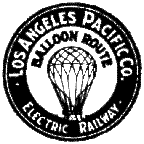WIt has been said that "Hollywood" is the world's best known proper noun, that the geographical location known by this name is the world's most famous city, although such a city by this name doesn't exist.
WEarliest settlers found the land covered thickly with cactus, from whose thorny depths yowled the wildcat and howled the coyote. The Spaniards had a name for Hollywood: "La Nopalera," the area covered with cactus. Once cleared, the land was good only for grazing as the water supply was almost non-extant. In 1875 the Cahuenga Valley had managed to find some water, and here and there a windmill laboriously sucked the precious liquid up from the depths to be spread sparingly on the thirsty acres whereon grew barley. In 1879 a terrible drought hastened the end of the cattle era; sheep by the thousands died and starving cattle were stampeded in great herds over the cliffs into the sea. Then it was that experiments with oranges and lemons began. Slowly the area grew in a haphazard way with no incorporated city to guide development. Forty acres were purchased near Hollywood Boulevard and Gower for $10/acre.
WIn about 1883 Harvey Henderson Wilcox* came to Los Angeles from Topeka, Kansas; ultimately founding Hollywood in 1888. He had made his fortune in the real estate business despite having completely lost the use of his legs due to typhoid fever. Wilcox purchased three tracts of land in Los Angeles and subdivided them. Much of the University District was built up through his efforts. Mrs. Wilcox was his constant advisor. Their only child passed away at age of 19 months and to solace themselves the Wilcoxes took long drives on Sunday afternoons. One of their favorite trips was out through the beautiful Cahuenga Valley. A certain fig and apricot orchard, centering at Hollywood Boulevard and Cahuenga Avenue was especially admired by them and they purchased it. Shortly thereafter Mrs. Wilcox had to return east, and while on the train she became acquainted with a wealthy lady who often spoke of her country home named "Hollywood." The name pleased Mrs. Wilcox and when she returned to Los Angles she so named her country place.
WThe Santa Fe Railroad had been completed in 1885 and the wildest boom Southern California has ever known was upon the land. Mr. Wilcox made considerable money opening subdivisions but he sold little land in Hollywood. He moved one of his farm houses to Cahuenga Avenue, gave up his ornate Los Angeles home (on Hill Street, later the site of the Los Angeles Pacific's Hill Street Station) and made the move to Hollywood permanently. To make Hollywood live up to its name he imported two English holly bushes which were very carefully nurtured to no avail. They did not thrive.
WMr. Wilcox was not frightened by the bursting of the boom in 1889. He cut up his 160 acre ranch with avenues running from Gower to Hudson and from Franklin to Sunset and lined his streets with pepper trees. A terrible drought came and his wells went dry. Watermelons were broken around the young pepper sprouts to keep them alive. The next year the whole countryside was flooded.
WAt about this time Senator Cornelius Cole laid out Colegrove, now South Hollywood. He came to South Hollywood in 1880 after having received almost 500 acres there as a legal fee. The town he founded got a postoffice and became the address for most of the Cahuenga Valley.
WWilcox persuaded the Cahuenga Valley Railroad to extend its steam dummy line up Western Avenue and out Prospect Avenue (Hollywood Boulevard) to Wilcox Avenue. Tourists began to come, and some bought ranches, but not enough to keep the line running. Then came E.C. Hurd, a wealthy Colorado miner. He bought acreage at the corner of Wilcox and Prospect and put in an immense lemon orchard, spending $50,000 for water. Hurd bought out the Cahuenga Valley Railroad and extended it to Laurel Canyon. This was somewhat of a help, but Hollywood was only a fair sucess. In 1892 Wilcox had died, land poor. Hurd followed him a few years later.
WThe lean nineties saw Hollywood engaged in a long and fruitless battle for water. Money was scarce, vegetable farmers were ruined, most people were land poor. Up to 1900 there were not more than 500 people in Hollywood and most of them came only after the electric ars began running through to Santa Monica from Los Angeles. The cars brough tourists, and at Cahuenga Avenue delivered them to C.M. Pierce (later to be the operator and chief tour guide of the Balloon Route Trolley Trip), who drove them around the valley in a tallyho hand gave them a chicken dinner at the Glen-Holl Hotel, all for 75¢. This hotel, a rambling frame structure stood at Ivar and Yucca. After dinner the tourists retook the car on to the beach.
WIn the late nineties Paul DeLongpre, the famous French painter of flowers, came to Los Angeles. In 1901 Mrs. Wilcox offered him three acres at the corner of Hollywood Boulevard and Cahuenga in exchange for three of his paintings; he readily accepted and the DeLongpre era began. He built a lovely home of Moorish inspiration with a great gallery and planted a garden of flowers that was soon widely admired. The LAP Balloon Route excursionists always stopped at Cahuenga long enough to permit the tourists to go through the DeLongpre gallery and garden and there have their pictures taken. Many hundreds of permanent Hollywood residents were first attracted to this area through these excursions and DeLongpre's fame.
* Harvey Henderson Wilcox is buried in Hollywood Memorial Cemetery, next to his wife, Daeida. He had been buried next to his mother and sister in Rosedale Cemetery, but was moved to Hollywood Cemetery in 1937.
Return to ERHA homepage
 Los Angeles Pacific
Los Angeles Pacific